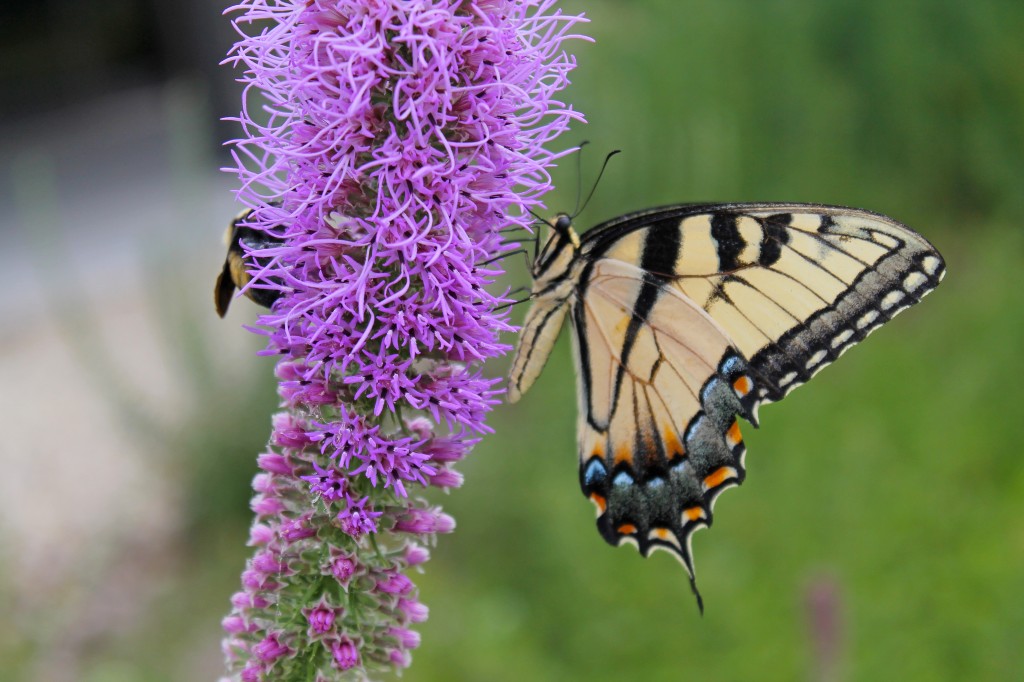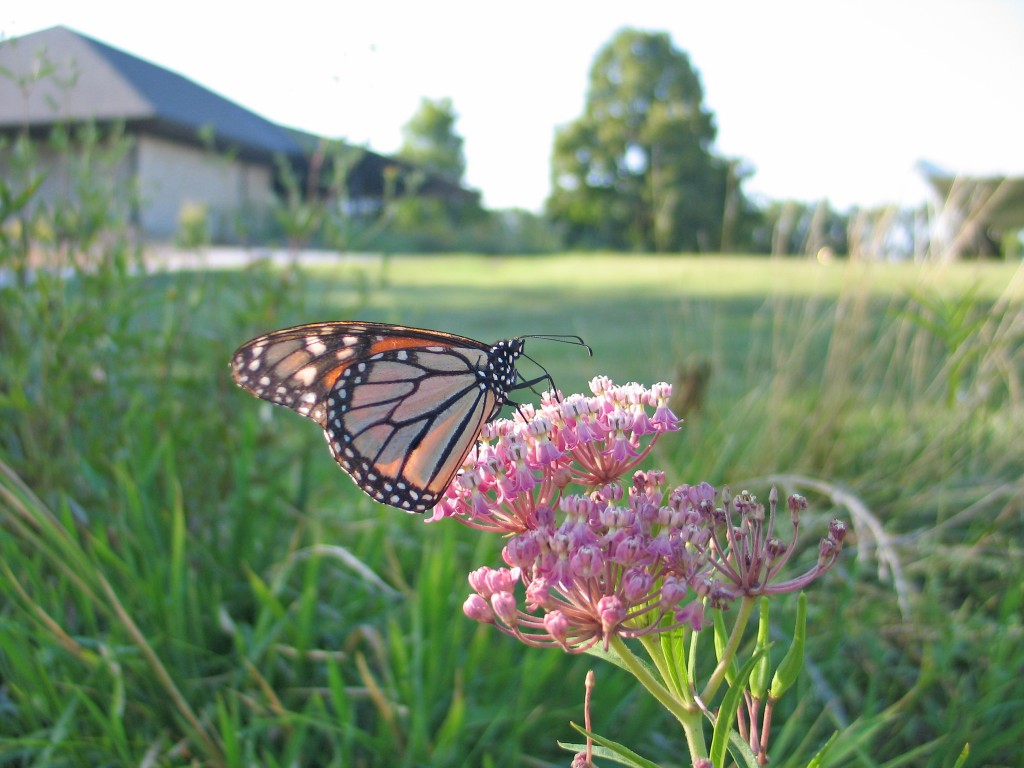It is true that pollinators are important for many reasons, including food production. According to the Natural Resources Defense Council in a report from March of 2011, “more than $15 billion a year in U.S. crops are pollinated by bees, including apples, berries, cantaloupes, cucumbers, alfalfa, and almonds. U.S. honey bees also produce about $150 million in honey annually.” It is also true that populations of pollinators are declining throughout the world.
There are many reasons for these declining populations, but what can we do to help them? A few simple steps can be taken in our own gardens, landscapes, and neighborhoods to create healthy ecosystems for pollinators to thrive. Our own backyard can provide the safe habitat they need to rebound from these startling declines.
5 Key Elements of a Pollinator-Friendly Landscape
1. Plant a variety of flowering plants:
The importance of flowering plants, especially native plants, to pollinators is well documented. Pollinators seek these plants out in the landscape. A recent butterfly survey for Harvey County found 17 of the 22 recorded species at the arboretum. We attribute this to the many native plants we have growing here. They don’t have to search to find food. They can find food throughout the year because the prairie is continuously in bloom with overlapping wildflowers blooming from early spring to late fall. Other low maintenance perennials add to the diversity of nectar-rich plants utilized by pollinators.
2. Water, Water, Water:
A water source gives life to pollinators. It can be a bird bath, pool, water feature or small stream. The type of source is not as important as its location. Place your water source in a semi-shaded area protected from wind along with a place to land and sip up the water. Any water in close proximity to the food they need will reduce stress on pollinators.
3. No Pesticide Zone:
This seems obvious, but it is important to note. When our plants are being eaten by insects or foliar diseases appear, we often grab the spray can to immediately solve the problem. Here at the arboretum, we spray as a last resort. By spraying sparingly and infrequently, we minimize the risk of harming pollinators in the garden. Think carefully about when, why and how you spray.
4. Provide shelter:
Pollinators need easy access to protecting habitat. Evergreen trees and shrubs with layered vegetation within easy flying distance from flowering plants is an ideal habitat. The layered plants provide protection from the wind and predators. This protecting habitat is a great place for pollinators to make their homes.
5. The more, the merrier:
If you are the only garden in your neighborhood that is pollinator-friendly, it is a start. But just imagine your landscape connected with your neighbors’ gardens, which are connected with hundreds of others within the community – a giant ecosystem that can be freely navigated by pollinators. Pollinator-friendly gardens can have a tremendous impact on reversing the decline of pollinators. Educate your friends, neighbors and children about what can be done to positively impact pollinators. It has to start somewhere, why not with you?


